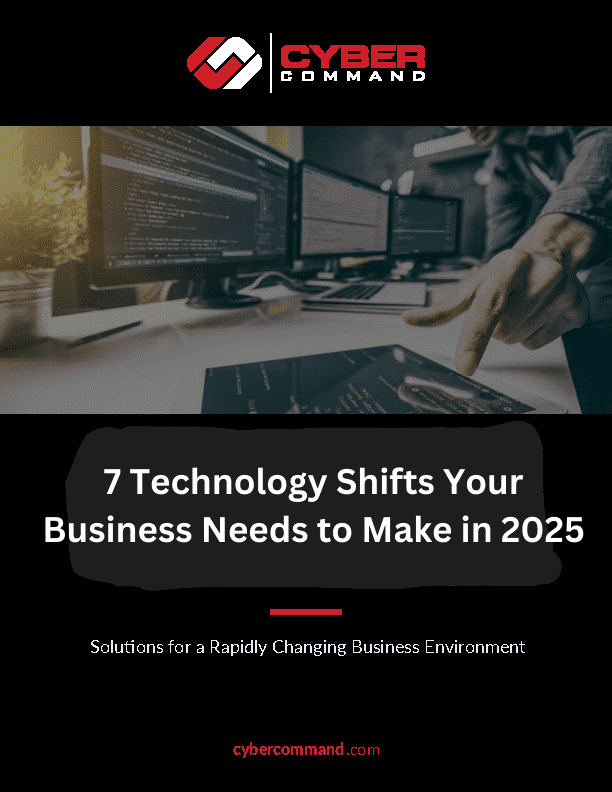nonprofit it services: 10 Powerful Solutions for 2025 Success
Empowering Your Mission Through Technology
Nonprofit IT services are specialized technology solutions designed to help mission-driven organizations maximize their impact while working within limited budgets. If you’re looking for reliable IT support for your nonprofit, here’s what you need to know:
| What Nonprofit IT Services Include | Why They Matter |
|---|---|
| ✓ Managed IT support and helpdesk | Allows staff to focus on mission, not technology problems |
| ✓ Cloud migration and management | Reduces hardware costs and enables remote work |
| ✓ Cybersecurity and data protection | Safeguards donor information and maintains trust |
| ✓ Discounted software and hardware | Stretches limited budgets further |
| ✓ Strategic technology planning | Aligns tech investments with organizational goals |
Nonprofits face unique technology challenges that commercial IT providers often don’t understand. With limited staff, tight budgets, and mission-critical operations, your organization needs technology that empowers rather than hinders your work.
Every dollar your nonprofit spends on ineffective IT systems is a dollar not spent on your mission. According to research, nonprofits that partner with specialized IT service providers report faster decision-making, improved team collaboration, and a significant return on investment – with some achieving a 5:1 return on their technology investments.
As one nonprofit leader noted: “Tech Impact understood our needs, appreciated the nonprofit challenges and obstacles we faced, and provided a plan of action to get us where we needed to be.”
I’m Reade Taylor, founder of Cyber Command, and I’ve dedicated my career to changing how organizations leverage technology, including providing specialized nonprofit IT services that understand your unique operational challenges and budget constraints.

Understanding Nonprofit IT Services & Why They Matter
When you’re running a nonprofit, every minute and dollar counts. Technology should help you change the world, not slow you down. Nonprofit IT services are specialized tech solutions built with your unique mission and constraints in mind.
Great technology empowers your organization to:
- Enable mission fulfillment by turning technology from a headache into a helpful ally
- Improve operational efficiency so your team can focus on impact, not spreadsheets
- Build donor trust through secure systems that protect sensitive information
- Align technology with strategy to make sure every tech dollar advances your goals
- Scale operations to grow your impact without proportionally growing your costs
- Foster a data-driven culture that helps you measure and demonstrate your results
As one nonprofit CFO told us: “When technology works smoothly, we can focus on serving our community instead of troubleshooting computer issues.”
The Definition & Scope
Nonprofit IT services aren’t just regular business IT with a discount slapped on. They’re thoughtfully designed solutions that understand the realities of mission-driven work: tight budgets, small teams wearing multiple hats, and the critical need to show donors their impact.
These services typically include responsive help-desk support for your day-to-day tech questions, infrastructure management to keep your systems running smoothly, affordable cloud solutions that replace expensive on-premise hardware, robust cybersecurity to protect sensitive donor data, and data analytics tools that help you measure and communicate your impact.
What makes these services special is how they align with nonprofit values and operational realities. Whether you need fully outsourced support or just help to supplement your existing staff, the right provider understands that technology should serve your mission, not the other way around.
Why Tech Is a Mission Multiplier
When thoughtfully implemented, technology doesn’t just support your work—it multiplies what you can accomplish. It’s not an overhead expense; it’s a strategic investment in your mission.
Amplified impact metrics help you tell your story with data. According to Salesforce, 93% of nonprofit customers achieved positive ROI after implementing their CRM solutions, giving them powerful new ways to demonstrate outcomes to funders.
Volunteer engagement becomes seamless with digital tools that help you recruit, train, and coordinate volunteers more effectively. This expands your reach without expanding your payroll.
Sustainability improves as cloud-based systems reduce hardware costs and energy consumption, aligning with environmental values while saving precious funds.
Operational efficiency transforms daily work. As one executive shared, “What used to take us days of manual work now happens automatically, freeing our team to focus on program delivery instead of administration.”

When your systems work seamlessly, your staff can dedicate more time and energy to what matters most: creating positive change in your community. That’s the true power of nonprofit IT services – turning technology from a necessary expense into a force multiplier for good.
Pain Points & Core Solutions for Nonprofits
Let’s talk about the real technology headaches that nonprofits face every day. If you’ve ever felt frustrated by your organization’s tech setup, you’re definitely not alone.
Common Challenges Nonprofits Face
I’ve spent countless hours sitting with nonprofit leaders across Orlando who share remarkably similar stories about their technology struggles. The passion for their mission is always evident – but so is the frustration with systems that just don’t work as they should.
One executive director confided, “Our computers were so old that staff would bring their personal laptops to work just to get things done.” This perfectly captures the outdated hardware reality many nonprofits face. Your team deserves better tools.
Meanwhile, valuable staff time gets consumed by manual, time-consuming processes – tracking donations in spreadsheets, manually entering data, or hunting through paper files. These administrative burdens steal hours that could be spent advancing your mission.
What keeps many nonprofit leaders up at night is donor data security. Your donors trust you with their personal and financial information, yet many organizations lack robust protection measures. This creates a particularly dangerous situation since larger donations make nonprofits attractive targets for cybercriminals.
Of course, underlying all these challenges are the perpetual budget constraints. When every dollar matters, technology often takes a backseat to direct program expenses – creating a painful cycle where inefficient systems waste even more resources.
Most nonprofits also operate with limited IT expertise, with technology responsibilities falling to whoever seems most “tech-savvy” rather than trained professionals. This well-intentioned approach often leads to band-aid solutions rather than strategic improvements.
Add to this the problems of siloed systems where different departments use separate tools that don’t communicate, the growing pains of supporting remote work, and the complexity of meeting compliance requirements without dedicated staff – and it’s clear why technology can feel overwhelming.
How Nonprofit IT Services Fix Them
The good news? There are practical, affordable solutions designed specifically for mission-driven organizations like yours.
Cloud migration transforms how nonprofits operate by eliminating expensive hardware needs while enabling flexible work arrangements. I’ve watched organizations cut their IT costs in half while gaining modern features through thoughtful cloud transitions. The days of server rooms eating up precious office space (and budgets) can be behind you.
The time-saving power of process automation can be truly transformative. One nonprofit leader told me with genuine amazement, “What used to take our team three days each month now happens automatically.” Imagine reclaiming hundreds of staff hours for mission-focused work.
Proactive monitoring and maintenance prevents those nightmare scenarios where systems crash during critical fundraising events. With 24/7 oversight, problems get resolved before they impact your operations – often before you even notice them.
Your nonprofit can stretch budgets further through discounted software licensing programs like Microsoft’s 10 free licenses or AWS’s $1,000 in promotional credits. These programs exist specifically for organizations like yours, but many nonprofits don’t know how to access them.
Staff training and support ensures your team can actually use the tools you’ve invested in. I’ve seen countless organizations purchase powerful systems that sit underused simply because staff weren’t properly trained.
By connecting previously integrated systems, you create a unified view of operations that improves decision-making and eliminates duplicate efforts. This holistic approach helps break down information silos between departments.
As your organization grows, scalable solutions grow with you, preventing the need for disruptive technology overhauls just as your programs are gaining momentum. And specialized compliance management guidance helps you steer complex regulations without dedicated in-house expertise.
As Tech Impact wisely notes from their work with over 10,000 nonprofits: “Your mission is not technology, but your mission is dependent on technology.” The right nonprofit IT services transform that dependency from a liability into a powerful advantage that multiplies your impact.

Comprehensive Nonprofit IT Service Categories & Best Practices
When it comes to empowering your nonprofit’s mission, you need more than just random tech solutions—you need a thoughtful, holistic approach that truly understands the unique challenges you face. Let’s explore how the right nonprofit IT services can transform your organization’s effectiveness while respecting your budget constraints.
Many nonprofits struggle with the decision between building an in-house IT team or partnering with an external provider. Here’s how they compare:
| In-House IT | Outsourced Nonprofit IT Services |
|---|---|
| High fixed costs (salaries, benefits) | Predictable monthly expenses |
| Limited expertise (1-2 people) | Access to diverse specialist team |
| Coverage gaps during vacations/illness | 24/7/365 coverage guaranteed |
| Reactive troubleshooting | Proactive monitoring and maintenance |
| Knowledge loss when staff leaves | Institutional knowledge retention |
| Difficult to scale quickly | Flexible scaling as needs change |
Managed Nonprofit IT Services
The backbone of effective nonprofit IT services isn’t just fixing problems—it’s preventing them before they derail your mission-critical work.
Think of managed IT as your organization’s technology guardian angel. With 24/7 help-desk support, your team never wastes precious time staring at frozen screens or dealing with mysterious error messages. At Cyber Command, we believe “24/7” should mean actual humans answering your calls, not just automated responses promising someone will “get back to you.”
Proactive maintenance means your systems receive regular updates, patches, and optimization—much like preventive healthcare for your technology. This approach not only prevents emergencies but also extends the life of your existing technology investments.
One of our nonprofit clients put it perfectly: “Moving to a fixed monthly fee made our budget planning so much easier—no more unexpected IT emergencies blowing our quarterly numbers.” This predictability is invaluable for organizations where every dollar counts.
Perhaps most valuable is having access to strategic virtual CIO services. Rather than making technology decisions in the dark, you’ll have expert guidance ensuring your IT roadmap aligns perfectly with your mission objectives. This strategic alignment is what transforms technology from a necessary expense into a mission multiplier.
For more information about how specialized support can transform your organization, visit our Nonprofit IT Support page.
Cybersecurity Services for Nonprofits
For mission-driven organizations, protecting donor data isn’t just a technical requirement—it’s about maintaining the trust that forms the foundation of your work.
Effective cybersecurity for nonprofits starts with a comprehensive risk assessment that evaluates your current security posture and identifies vulnerabilities before they can be exploited. This creates the roadmap for your protection strategy.
Multi-factor authentication (MFA) acts as an additional shield, ensuring that even if passwords are compromised, unauthorized users still can’t access your sensitive systems. This simple step dramatically reduces your risk profile.
Regular security awareness training transforms your team from a potential vulnerability into your first line of defense. When staff can recognize and avoid threats like phishing attacks, you’ve essentially created a human firewall protecting your organization.
For nonprofits handling sensitive data, compliance management guidance helps you steer complex regulatory requirements without needing to become an expert yourself. And robust backup and disaster recovery systems ensure that even in worst-case scenarios, your organization can quickly get back on its feet.
As one cybersecurity expert we work with emphasizes: “It’s not a matter of if you will be hit by a cyberattack, but when.” This reality makes proper protection especially critical for nonprofits, where a breach could damage donor trust and jeopardize funding.
Learn more about protecting your mission at our Cybersecurity for Nonprofits page or read this insightful article on how nonprofits should store and protect donor data.
Cloud Migration & Collaboration
Moving to the cloud isn’t just a technical upgrade—it’s about creating new possibilities for how your team works together to fulfill your mission.
Microsoft 365 Nonprofit offers discounted or donated access to essential tools that can transform how your team collaborates. Teams, SharePoint, and Exchange become your virtual office, accessible from anywhere your staff needs to work.
For organizations preferring Google’s ecosystem, Google Workspace for Nonprofits provides collaborative tools including Gmail, Drive, and Meet with special nonprofit pricing that respects your budget constraints.
Infrastructure needs? The AWS Nonprofit Credit Program offers access to powerful cloud computing with $1,000 in promotional credits—perfect for organizations with more complex technical requirements.
The real magic happens when these tools enable true remote work flexibility. As one nonprofit leader shared after their cloud migration: “Our staff can now collaborate in real-time from anywhere, which has been transformative for our programs that span multiple communities.”
Cloud-based disaster recovery solutions also ensure continuity during disruptions—whether it’s a minor office issue or a major regional event, your critical systems remain accessible when your community needs you most.
Find what’s new with Microsoft Cloud for Nonprofit and how it might benefit your organization.

Data Analytics, CRM & AI
The ability to harness your data can dramatically amplify your impact, improve fundraising effectiveness, and optimize operations—all without increasing your budget.
The Salesforce Nonprofit Cloud, available through their Power of Us program, offers eligible nonprofits 10 free licenses to this powerful CRM platform. This isn’t just about tracking contacts—it’s about building meaningful relationships with supporters and understanding the full journey of everyone who engages with your mission.
Data visualization dashboards transform complex information into clear, actionable insights for your leadership and board members. Instead of drowning in spreadsheets, you can quickly identify trends and make confident decisions based on real evidence.
AI-powered predictive analytics takes this a step further by identifying patterns in donor behavior, program outcomes, and operational efficiency that might otherwise remain hidden. These insights help you allocate your limited resources where they’ll create the greatest impact.
The results speak for themselves: 29% of nonprofit Salesforce customers report making decisions faster since implementing the CRM, and an impressive 93% achieved positive ROI on their investment. As one development director told us, “We used to guess which donors might be interested in specific programs—now we know, and our campaigns are performing better than ever.”
Learn more about Why You Need Data Analytics and explore our Software for Nonprofits solutions.
Communications & Productivity Tools
The right communication tools form the backbone of effective nonprofit operations, connecting your staff, volunteers, donors, and the communities you serve in seamless, meaningful ways.
VoIP phone systems offer cost-effective, feature-rich alternatives to traditional phone lines while integrating with your other systems. This means constituent information is at your fingertips during calls, and no opportunity for connection is missed.
Platforms like Microsoft Teams create unified communication hubs where chat, video meetings, and document collaboration happen in one place. This reduces the frustration of constant app-switching and creates a more natural workflow for your team.
Secure shared drives and document management systems ensure everyone has access to the files they need—and only the files they need—creating both efficiency and appropriate safeguards for sensitive information.
For organizations with field staff, mobile device management provides security and oversight for smartphones and tablets used in your work, protecting data while enabling the flexibility your team needs.
And because inclusion matters both within your organization and among those you serve, accessibility tools ensure your technology works for people of all abilities—reinforcing your commitment to the communities you support.
As one nonprofit director noted during the height of the pandemic: “Having the right communication tools wasn’t just convenient—it was the difference between continuing our services and shutting down completely.” That’s the power of thoughtfully implemented nonprofit IT services that truly understand your mission.
Partnering, Funding & Real-World Wins
Finding the right technology support for your nonprofit doesn’t have to be overwhelming. Let’s explore how to make smart partnership decisions, uncover funding opportunities, and learn from organizations already seeing amazing results with the right nonprofit IT services.
Outsourcing vs In-House Decision Matrix
“Should we hire our own IT person or work with an outside company?” It’s a question I hear from nonprofit leaders all the time.
The answer depends on your unique situation. Outsourcing makes perfect sense when your budget can’t stretch to cover full-time IT salaries and benefits—which for many nonprofits is a reality, not a choice. External partners also bring diverse expertise across multiple technology areas that would be impossible to find in a single staff hire.
As one executive director told me, “We finally stopped pretending our program coordinator with ‘good tech skills’ could handle our cybersecurity. Outsourcing gave us an entire team of specialists for less than one full-time salary.”
On the flip side, keeping IT in-house might be right if your organization has truly unique technology needs or faces complex regulatory requirements demanding dedicated oversight. Some larger nonprofits with stable funding also find that building internal capacity aligns with their long-term goals.
Many of our most successful nonprofit partners actually take a hybrid approach—having a tech-savvy staff member who serves as the primary contact with an outsourced provider like Cyber Command handling the complex technical work.
How to Choose the Right IT Partner
Finding an IT partner who truly understands nonprofit realities makes all the difference. Here’s a roadmap to finding your perfect match:
First, know yourself. Before talking to potential partners, take time to document your current challenges, future goals, and budget constraints. This clarity will help you evaluate whether a provider truly understands your needs.
Nonprofit experience matters enormously. Ask potential partners specifically about their work with similar mission-driven organizations—and then actually call those references! A provider might be technically competent but still not grasp the unique constraints and opportunities nonprofits face.
Review those Service Level Agreements with a magnifying glass. Will they respond quickly enough during your critical fundraising events? Do their coverage hours align with when your team actually works?
Don’t underestimate cultural fit. Your IT partner should genuinely care about your mission, not just see you as another client. As one homeless services provider shared, “Our IT company volunteers at our shelter twice a year. They understand our work in a way they never could otherwise.”
Grants, Discounts & Donations
One of the silver linings of nonprofit status is access to amazing technology resources at reduced or no cost. These opportunities can transform your technology capabilities without breaking your budget.
TechSoup serves as a nonprofit technology marketplace offering dramatically discounted software, hardware, and services. If you’re not already registered, this should be your first stop.
Microsoft offers eligible nonprofits 10 free Microsoft 365 licenses and significant discounts on additional seats—a game-changer for many small organizations struggling with outdated systems.
Cloud services are increasingly essential, and AWS Nonprofit Credit Program provides $1,000 in promotional credits to help you implement cloud solutions without upfront costs.
For organizations needing robust constituent relationship management, Salesforce’s Power of Us Program offers 10 free licenses of their Nonprofit Cloud—a system that would otherwise cost thousands.
Beyond these mainstream options, many foundations offer grants specifically for nonprofit technology projects. The key is demonstrating clear mission alignment—how the technology will directly advance your impact, not just make operations easier.
Our team at Cyber Command helps Orlando nonprofits steer these opportunities, ensuring you maximize available resources while meeting all eligibility requirements for cybersecurity grants and other funding.

Training & Capacity Building
Even the best technology falls flat without proper training. As one frustrated nonprofit director told me, “We spent thousands on a new donor database that nobody uses because nobody knows how.”
Effective technology adoption requires thoughtful capacity building. Organizations like Tech Impact offer specialized nonprofit technology training through their Digital Skills Center, with courses designed specifically for the sector’s unique needs.
If you’re implementing Salesforce, their free Trailhead learning platform provides guided paths specifically for nonprofit users—turning technical confusion into confidence through bite-sized lessons.
Don’t underestimate the value of peer communities. Networks like NTEN (Nonprofit Technology Network) provide invaluable knowledge sharing among people facing the same challenges you are.
Look for IT partners who include regular training and support as part of their service offering. The best providers view training not as an add-on but as essential to your success.
Success Stories in Action
Real-world examples show just how transformative the right nonprofit IT services can be:
The American Cancer Society implemented a cloud change strategy that significantly reduced their overhead costs while actually improving their fundraising capabilities. By moving to cloud-based systems, they strengthened operations and directed more resources toward their core mission of fighting cancer.
Organizations working with IT4Causes report remarkable returns on their technology investments. For every dollar invested in their nonprofit IT services, organizations generate approximately five dollars in value through improved efficiency, reduced downtime, and improved capabilities. Last year alone, they provided over 5,800 hours of assistance to 33 nonprofits across the country.
Smaller organizations can see dramatic improvements too. Good Heart Technology, a nonprofit IT provider, completed a network overhaul for Jesse Tree, a housing-focused nonprofit. Their heartfelt testimonial speaks volumes: “Good Heart Technology kindly did a complete overhaul of Jesse Tree’s network and supported us with no judgment and no grief.”
These success stories share common elements: thoughtful planning before implementation, genuine staff engagement throughout the process, and measuring outcomes against mission objectives rather than just technical metrics.

Frequently Asked Questions & Conclusion
When nonprofit leaders reach out to us about technology, they often have similar questions. Let’s address the most common ones we hear from organizations across Orlando and beyond as they consider how nonprofit IT services can strengthen their mission work.

What’s the first step to modernize our tech on a shoestring?
I always tell nonprofit leaders that meaningful tech improvement starts with understanding what you have—not immediately buying something new. Begin with a thoughtful assessment of your current technology landscape.
This means creating a simple inventory of all your hardware and software, but also talking with your team about their daily tech frustrations. What systems slow them down? Where do they waste time on workarounds? These conversations often reveal surprising insights.
Next, examine how well your current systems actually support your mission activities. Technology should enable your work, not complicate it.
Security deserves special attention too. Even a basic security review can identify your biggest vulnerabilities before they become problems.
With this information in hand, create a prioritized roadmap that starts with “quick wins” – changes that deliver immediate value without breaking the bank.
One small housing nonprofit we worked with finded they could eliminate three separate spreadsheets by properly using features in their existing donor database. This simple change saved their development director nearly five hours every week—time she now spends building relationships with major donors instead of wrestling with data entry.
As one of our nonprofit clients put it: “We didn’t need a technology revolution. We needed thoughtful evolution, starting with what we already had.”
How much should a small nonprofit budget for outsourced IT?
Budget questions are always tricky because every organization’s needs differ, but I can offer some practical guidelines.
Most healthy nonprofits allocate between 1-5% of their total operating budget to technology, including both internal staff time and outsourced services. Organizations with more complex technology needs (like those handling sensitive health data or running sophisticated online programs) typically land at the higher end of that range.
For nonprofit IT services specifically, many providers (including Cyber Command) offer monthly subscription models that provide predictable costs. These typically range from $100-$200 per user per month for comprehensive support, depending on your needs.
If that sounds like a lot for your organization, technology is an investment, not just an expense. When properly implemented, every dollar spent on technology should return multiple dollars in value through improved efficiency, reduced downtime, and improved capabilities.
One arts nonprofit we work with started with just basic security services and help desk support, then gradually added more comprehensive services as they saw concrete returns on their initial investment. Their executive director now says, “Technology went from being our biggest headache to our secret weapon for growing our programs—all without increasing our overall budget.”
How do we keep donor data safe without an in-house security team?
Donor trust is precious, and protecting their information is essential. The good news is you don’t need a dedicated security team to implement strong protections.
Multi-factor authentication (MFA) is your first and most powerful defense. By requiring a second verification step beyond passwords, you’ll stop the vast majority of unauthorized access attempts. Make this mandatory for everyone who accesses donor information—no exceptions.
Regular, tested backups are equally important. Your data backup system is like an insurance policy—worthless unless you’ve verified it actually works. Schedule quarterly restoration tests to ensure you could recover if needed.
For many small to mid-sized nonprofits, a managed security service provides the perfect balance of protection and affordability. These services monitor your systems around the clock for suspicious activity and respond to threats—all for a fraction of what an in-house security person would cost.
Don’t overlook the human element. Clear data handling policies and regular security awareness training help your team recognize and avoid common threats like phishing emails. As one nonprofit director told me after a staff training: “I never realized how much security depends on our people, not just our technology.”
Finally, explore cybersecurity grants and discounted services specifically created for nonprofits. Organizations like TechSoup offer reduced-cost security tools, and many foundations now provide grants specifically for strengthening nonprofit cybersecurity.
At Cyber Command, we believe every nonprofit deserves enterprise-grade security, regardless of size. Our all-in-one 24/7 IT department empowers organizations like yours to focus on your mission while we handle the technology that supports it. Ready to start your technology assessment? Contact us today to begin the conversation.
Conclusion: Technology as Mission Enabler
Technology should never pull you away from your mission—it should be the wind in your sails, helping you reach more people and create deeper impact. At Cyber Command, we’ve walked alongside countless nonprofits in Orlando and beyond, and we’ve seen how the right technology approach transforms organizations from constantly putting out tech fires to confidently advancing their missions.
Our all-in-one 24/7 IT department approach is built specifically for mission-driven organizations like yours. We understand that you need:
Predictable IT costs that align with your grant cycles and budgeting realities—no surprises that force difficult choices between technology and programs.
Mission-focused technology planning that ensures every dollar you invest in tech directly advances your goals and creates tangible impact.
Comprehensive support that liberates your team from technology headaches so they can focus their passion and energy where it belongs—on changing lives.
The change we’ve witnessed in our nonprofit partners is remarkable. As the executive director of a local youth-serving organization told us after six months of partnership: “Technology went from being our biggest headache to our greatest enabler. We’re now able to serve more people with the same resources because our systems actually support our work instead of hindering it.”
Your mission is too important to be held back by outdated systems, security vulnerabilities, or technology that just doesn’t work the way it should. The first step toward change is a conversation about your unique needs and challenges. Contact us today to schedule your nonprofit technology assessment and begin your journey toward technology that truly serves your mission rather than the other way around.
When technology works right, it becomes invisible—quietly empowering your team to create the change you want to see in the world. That’s our promise to you through our nonprofit IT services: technology that enables rather than distracts, amplifies rather than limits, and ultimately helps you bring your mission to life in more powerful ways.






